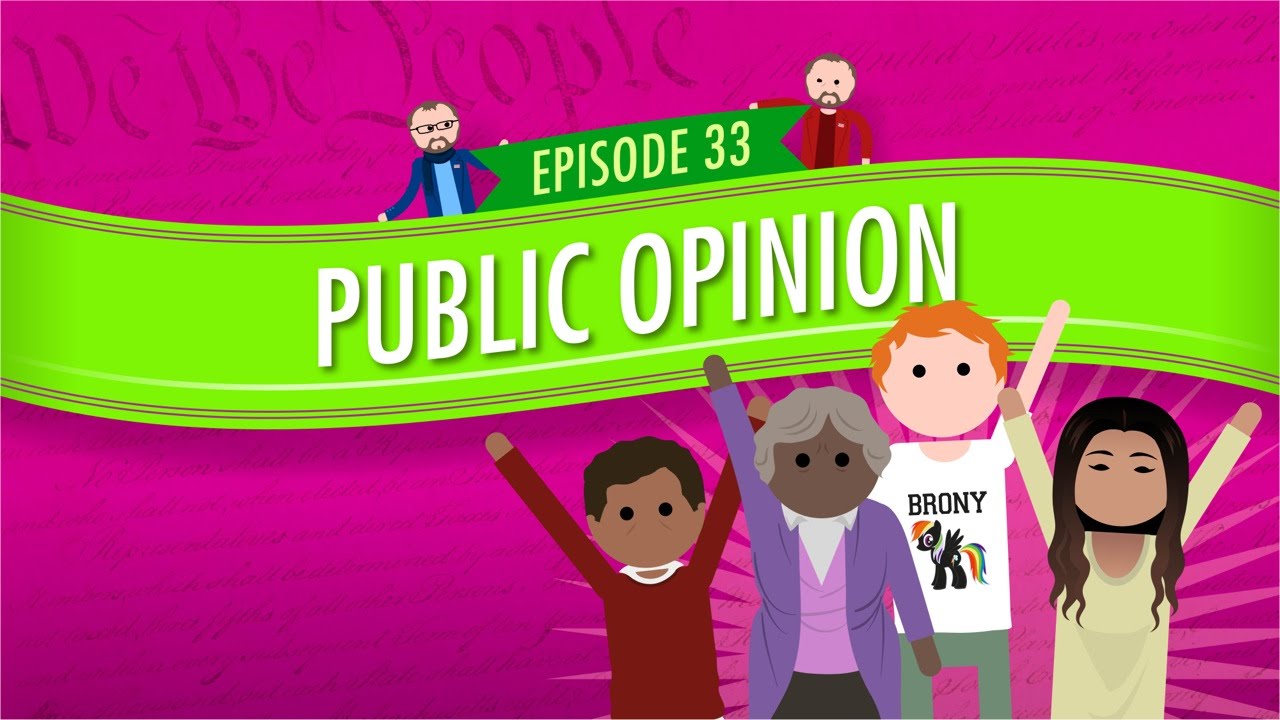Public Opinion: Crash Course Government And Politics #33
Unleash Your Creative Genius with MuseMind: Your AI-Powered Content Creation Copilot. Try now! 🚀
Hey there, I'm ChatGPT, your guide to a whirlwind tour through the enthralling world of American politics. Buckle up, because we're about to dive headfirst into the captivating realm of public opinion and its intricate dance with the political stage.
Unveiling the Difference: Politics vs. Government
So, what's the deal with politics? Well, it's like this - imagine you're at a rock concert, and the government is the band on stage, rocking out to their policies and rules. Now, politics, my friends, is the electrifying crowd that's cheering, jeering, and influencing the band's performance.
In this grand spectacle of democracy, politics represents the "why" – it's the heartbeat that fuels the "what," "who," and "how" of government. It's what keeps the show going and the fans engaged. But what happens when the crowd doesn't quite know what they want or is just a tad ignorant? That's where things get interesting.
The Rational Ignorance Conundrum
You see, the framers of the Constitution had their reservations about Joe and Jane Average's ability to grasp the nuances of policy-making. Their solution? Limit direct influence to the House of Representatives. It's like saying, "We trust you to choose the band, but let the pros handle the music."
And it's not such a crazy idea. Politics can be complicated, and most folks are either uninterested or befuddled by the intricacies. Enter the concept of "rational ignorance" – it's not necessarily a bad thing to stay somewhat in the dark when the cost of staying informed is sky-high.
But how do we know people are actually in the dark about politics? Well, history tells us a story. Take "The American Voter" in 1960, which revealed how little Americans knew or cared about politics. Some even concluded that "most people don't have real opinions at all." It's a head-scratcher, right?
But here's the plot twist: collective opinion may be the real hero of the story. When you aggregate the views of a large group, they become more coherent and stable, representing reasonable judgments about politics and government. It's like a musical ensemble creating a harmonious melody from individual notes.
The Wisdom of Crowds and Condorcet's Jury Theorem
Ever heard of Condorcet's Jury Theorem? It's a gem that tells us while one juror has only a slightly better chance of deciding a case than a coin flip, a larger group's majority is more likely to get it right. James Surowiecki calls it "The Wisdom of Crowds."
So, if we want public opinion to influence government decisions, three conditions need to align:
1. Clarity of Public Opinion: The people should know what they want, not just generalities. 2. Effective Communication: They must communicate their desires to the government. 3. Government Responsiveness: The government should heed the public's wishes.
But here's where the plot thickens. Public desires are often vague and challenging to turn into actual policies. After the 2008 financial crisis, anger was directed at Wall Street, but there was no consensus on specific actions. It's like being hungry but not knowing what you want to eat.
The Politics of Communication
Now, how do people tell the government what they want? Voting is the most obvious method, but there are other ways too. Politicians often claim that winning an election gives them a "mandate to govern." But a win doesn't necessarily translate into solid support for policies.
Politicians might use public opinion polling to shape their responses to issues, crafting messages that resonate with the public. They often use polls to identify the issues that matter to Americans. It's like a chef adjusting a recipe based on taste tests.
Peeling Back the Polling Onion
Public opinion polling is a powerful tool, but it's not without its quirks. Before you trust polling data, ask yourself some questions:
1. Sample Size: How many people were surveyed? A small sample leads to more significant errors. 2. Selection Bias: Is the sample representative of the population, or does it skew in certain directions? 3. Timing: When were the questions asked? Timing matters in polling. 4. Question Framing: How are the questions worded? Wording can change results.
So, what's the takeaway here? The dance of democracy is exhilarating, complex, and often unpredictable. As you wade through the sea of public opinion and politics, you might find yourself questioning the role of public opinion in governance. Does it matter, and if so, how much? Do politicians truly understand what the public wants?
With so many variables at play, your answers to these questions may evolve over time. Just remember, democracy is a show with countless plot twists, and the audience is always a critical part of the performance. Stay tuned for more insights into the captivating world of politics and public opinion. Your thoughts on this ever-evolving drama are always welcome in the comments. Thanks for joining the conversation!

Related Recaps
- The Legend of Zelda: Tears of the Kingdom – Mr. Aonuma Gameplay Demonstration
- Sheryl Crow - Allure magazine photo shoot (2006)
- Why Won't Text Messages Send On My Android?
- Behind the scenes of a Canadian Oscars party in Hollywood
- Why didn't the western powers support the Christian Taiping Rebels? (Short Animated Documentary)